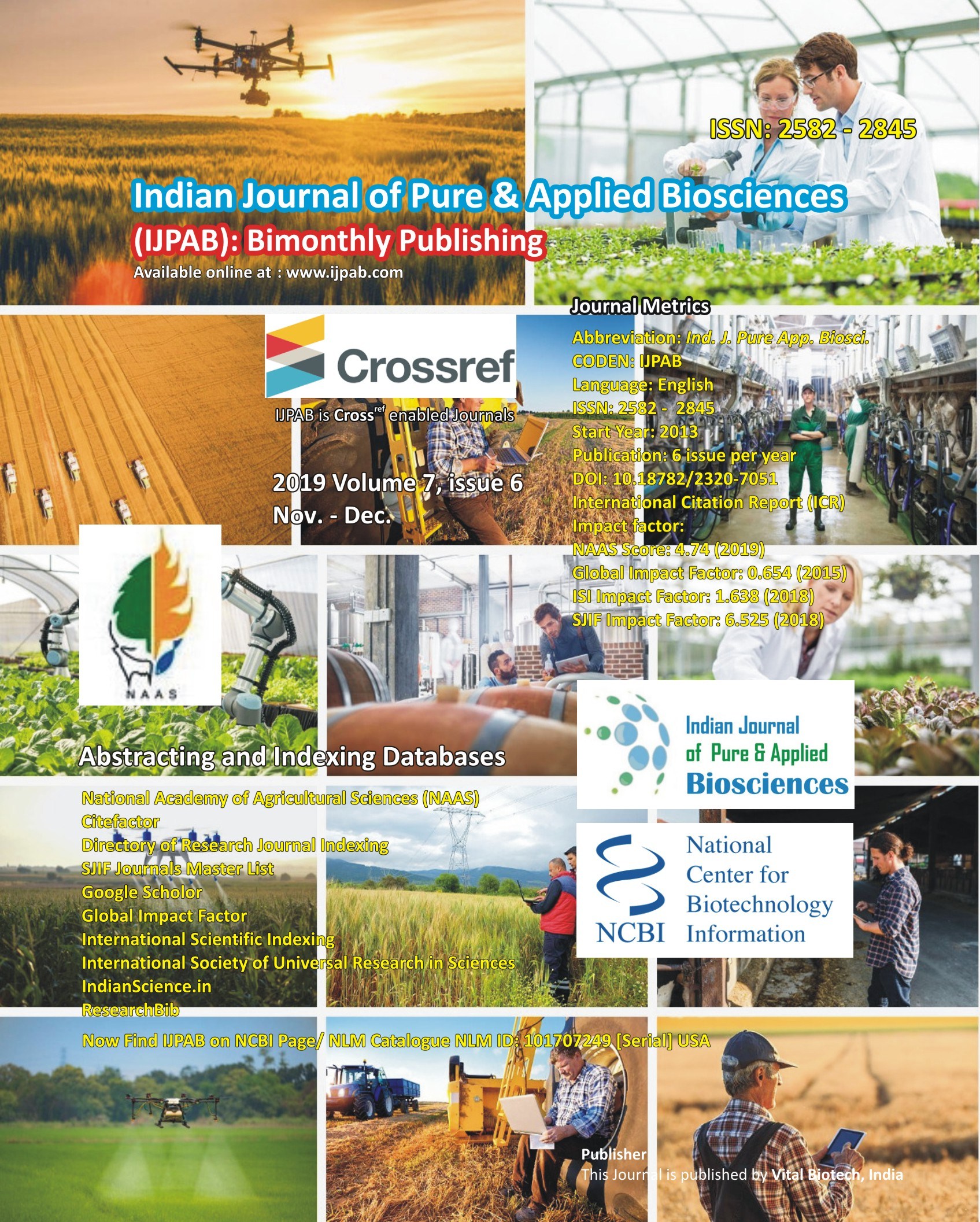
-
No. 772, Basant Vihar, Kota
Rajasthan-324009 India
-
Call Us On
+91 9784677044
-
Mail Us @
editor@ijpab.com
Indian Journal of Pure & Applied Biosciences (IJPAB)
Year : 2019, Volume : 7, Issue : 6
First page : (118) Last page : (128)
Article doi: : http://dx.doi.org/10.18782/2582-2845.7832
Characterization of Zeolite and Its Influence on Growth and Yield of Finger Millet (Eleusine coracana L.) in Eastern Dry Zone of Karnataka
Shivakumara M. N.1*, Krishnamurthy R.2, Subbarayappa C. T.3, Chamegowda, T. C.3 Thimmegowda, M. N.4 and Muthuraju R.5
1Ph.D. Scholar, 2Associate Professor, 3Professor
Department of Soil Science and Agricultural Chemistry,
4Agronomist, AICRP on Dryland Agriculture,
5Asst. Professor, Department of Agricultural Microbiology
University of Agricultural Sciences, GKVK, Bangalore- 560065, Karnataka, India
*Corresponding Author E-mail: mnshivakumara@gmail.com
Received: 14.09.2019 | Revised: 21.10.2019 | Accepted: 26.10.2019
ABSTRACT
A field experiment was conducted at Zonal Agricultural Research Station, GKVK, Bengaluru during kharif-2017 to characterize the chemical and physical properties of zeolite and to study its influence on growth and yield of finger millet. The pH of zeolite recorded 7.41 and it has higher water holding capacity of 89.5%, electrical conductivity was 0.61 dS m-1. The nitrogen, phosphorus and potassium content of zeolite were 0.14, 0.18 and 0.77 per cent, respectively. The cation exchange capacity of zeolite was 184 cmol (p+) kg-1. The bulk density and particle density of zeolite were 0.54 and 0.64 g cc-1, respectively. Field experiment consists of 20 treatment combinations comprising five levels of zeolite and four levels of graded fertilizers, laid out in RCBD design with factorial concept and replicated thrice on sandy loam soil having slightly acidic soil pH (5.52). The treatment received zeolite at 50 kg ha-1 recorded significantly higher plant height (15.95, 51.70 70.34 and 76.17 cm at 30, 60, 90 DAS and at harvest stage, respectively). Number of tillers per hill (7.70), total dry matter production (40.36 g hill-1), number of fingers per ear head (5.97), straw yield (46.22 q ha-1) and grain yield (34.84). Significantly higher plant height was recorded in treatment received 125 per cent RDF (14.89, 47.02, 66.55 and 72.85 cm, respectively) and 100 per cent RDF (14.87, 46.32, 66.38, 72.28 cm, respectively) in 30, 60, 90 DAS and at harvest stage, respectively. Significantly higher grain (33.88 q ha-1) and straw yield (44.08 q ha-1) was recorded in 125% RDF. The dry matter production (41.89 g per hill) straw yield (48.30 q ha-1), grain yield (36.32 q ha-1) and number of fingers per ear head (5.94 ) were recorded significantly higher in treatment received 50 kg zeolite ha-1+ 125% RDF.
Keywords: Zeolite, Finger Millet, Nutrient content, Growth, Yield
Full Text : PDF; Journal doi : http://dx.doi.org/10.18782
Cite this article: Shivakumara, M.N., Krishnamurthy, R., Subbarayappa, C.T., Chamegowda, T.C., Thimmegowda, M.N., & Muthuraju, R. (2019). Characterization of Zeolite and Its Influence on Growth and Yield of Finger Millet (Eleusine coracana L.) in Eastern Dry Zone of Karnataka, Ind. J. Pure App. Biosci. 7(6), 118-128. doi: http://dx.doi.org/10.18782/2582-2845.7832

